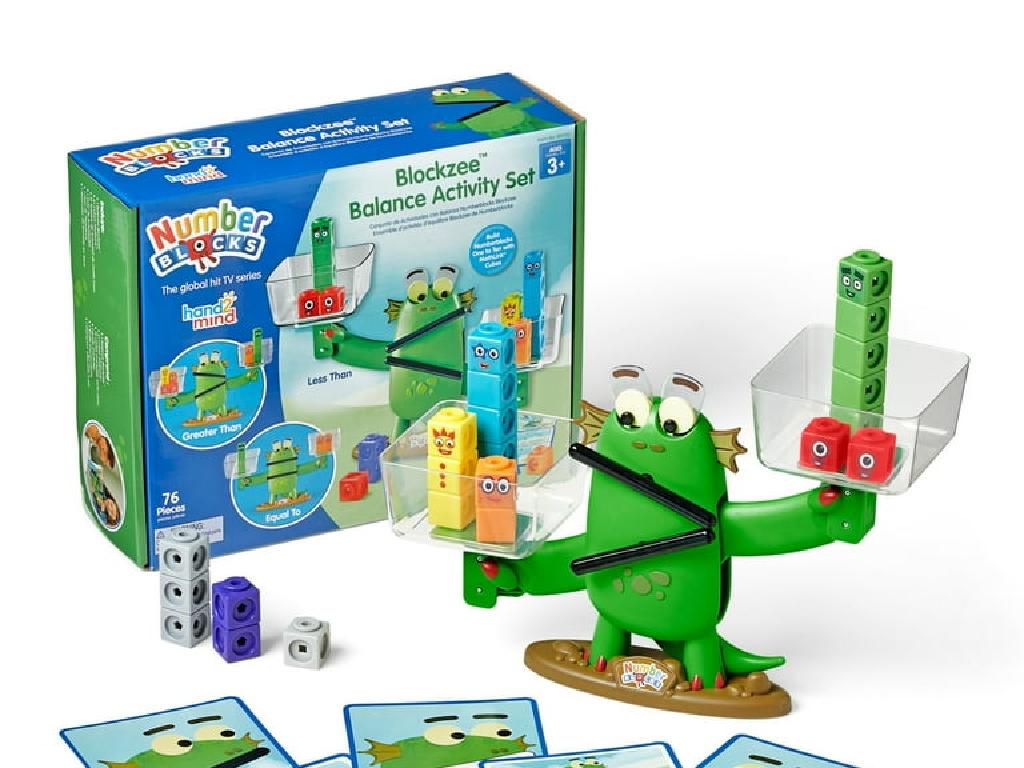Identify Mammals, Birds, Fish, Reptiles, And Amphibians
Subject: Science
Grade: Third grade
Topic: Classification
Please LOG IN to download the presentation. Access is available to registered users only.
View More Content
Introduction to Animal Classification
– What is classification?
– Sorting things based on similarities and differences.
– Reasons for classifying animals
– Helps us understand how animals are related and organize information.
– Exploring five animal classes
– Mammals, birds, fish, reptiles, amphibians.
– Characteristics of each class
– Mammals have fur, birds have feathers, fish have scales, reptiles have dry skin, amphibians have moist skin.
|
This slide introduces the concept of classification in the animal kingdom, which is a system used by scientists to sort and organize living things. Classification helps us to understand the relationships between different animals and to study their characteristics more efficiently. The five main classes of animals that the students will learn about are mammals, birds, fish, reptiles, and amphibians. Each class has unique features that set them apart, such as mammals having fur or hair and being warm-blooded, while birds have feathers and lay eggs. Fish are adapted to living in water with gills and scales, reptiles have dry scaly skin and lay eggs on land, and amphibians have moist skin and typically start their life in water before some move to land. Encourage the students to think of examples of each class and discuss the importance of each characteristic in helping the animals survive in their environments.
Exploring Mammals
– Mammals have fur or hair
– They also produce milk for their babies
– Mammals give birth to live young
– Unlike other animals, they don’t lay eggs
– Examples: Humans, Elephants, Dolphins
– These are all different, yet they’re all mammals
– Fun Fact: Mammals are warm-blooded!
– This means they can regulate their body temperature
|
This slide introduces students to the class of mammals. Key characteristics include having fur or hair and the ability to produce milk for their offspring. Emphasize that mammals give birth to live young, which distinguishes them from other vertebrates like birds or reptiles. Provide examples such as humans, elephants, and dolphins to illustrate the diversity within the mammal class. Highlight the fun fact that mammals are warm-blooded, explaining that this means they can keep their body temperature steady, unlike cold-blooded animals whose body temperature changes with the environment. Encourage students to think of other mammals and how they might share these common traits.
Exploring Birds: Feathered Friends
– Birds have unique features
– Feathers, beaks, and lay eggs
– Examples: Robins, Eagles, Penguins
– Robins find worms, Eagles catch fish, Penguins swim
– Beak shapes and bird types
– Different beaks for different feeding habits
– Class Activity: Beak Shape Hunt
|
This slide introduces students to the characteristics that define birds, such as having feathers, beaks, and the ability to lay eggs. Provide examples of different birds like Robins, Eagles, and Penguins, highlighting their diverse habitats and behaviors. Explain how beak shape is related to a bird’s feeding habits, preparing students for the class activity. For the activity, students will look at pictures of birds and match them to their beak shapes, which helps them understand the relationship between a bird’s physical characteristics and its lifestyle. Teachers should prepare images of birds with various beak shapes and guide the students in identifying the purpose of each beak type.
Exploring Fish: A Dive into Classification
– Fish characteristics
– Fish have scales, fins, and lay eggs.
– Examples: Goldfish, Salmon, Clownfish
– Goldfish are common pets, Salmon swim upstream to lay eggs, Clownfish live in sea anemones.
– Fish respiration
– Gills help fish breathe underwater.
– Fun Fact about Fish!
|
This slide introduces students to the characteristics of fish as part of the larger topic of animal classification. Discuss the unique features of fish, such as scales and fins, and how they lay eggs in water. Provide examples of different types of fish to help students relate to the topic, such as the common goldfish, migratory salmon, and the clownfish known from popular culture. Explain how fish breathe underwater using gills, which extract oxygen from water. The fun fact can be a memorable takeaway for the students, sparking their interest in marine biology. Encourage students to think of other fish and their habitats, and how these features help them survive in their environments.
Exploring Reptiles
– Reptiles’ unique features
– Dry skin, scales, lay eggs on land
– Meet turtles, snakes, lizards
– Examples: Sea turtles, King Cobra, Komodo dragon
– Reptiles’ environmental adaptation
– They can live in deserts or swamps, use the sun to stay warm
|
This slide introduces students to the class of animals known as reptiles. Key characteristics include their scaly skin, which prevents them from drying out, and their ability to lay eggs on land. Provide examples like turtles, which can live in water and on land; snakes, which can be found in various environments; and lizards, which often bask in the sun to regulate their body temperature. Discuss how these adaptations help reptiles survive in diverse habitats, from dry deserts to humid swamps. Encourage students to think about how reptiles’ features help them in their specific environments and to share any experiences they have had observing reptiles.
Exploring Amphibians
– Amphibians have unique features
– They have moist skin and lay eggs in water
– Frogs, Toads, and Salamanders
– These are common examples of amphibians
– Amphibians live in water and land
– They start life in water, then often move to land
– Fun Fact about Amphibians
|
This slide introduces students to the fascinating world of amphibians. Start by discussing the characteristics that define amphibians, such as their moist skin and the fact that they lay eggs in water. Provide examples like frogs, toads, and salamanders to help students visualize and remember these creatures. Highlight the unique ability of amphibians to live both in water and on land, explaining that they typically begin life as larvae in the water before growing to live on land. The fun fact can be a memorable point for students to understand amphibians’ dual lifestyles. Encourage students to think of any experiences they’ve had seeing these animals in their own lives.
Classifying Animals Together
– Group animals into classes
– Characteristics of mammals
– Warm-blooded, hair or fur, live births
– Traits of birds, fish, reptiles, amphibians
– Birds: feathers, beak, lay eggs; Fish: scales, gills; Reptiles: dry skin, lay eggs; Amphibians: moist skin, live in water and on land
– Review unique class features
|
This slide is for a class activity where students will actively engage in classifying animals into their respective classes: mammals, birds, fish, reptiles, and amphibians. Begin by revisiting the characteristics that define each class. Mammals are generally warm-blooded and have hair or fur; most give birth to live young. Birds have feathers and beaks and lay eggs. Fish are characterized by their scales and gills, allowing them to live in water. Reptiles have dry, scaly skin and typically lay eggs. Amphibians have moist skin and can live both in water and on land. After the review, students will work in groups to classify a set of animal pictures or names into these classes. Provide guidance and ensure each group discusses the unique features that determine an animal’s class. This activity will help solidify their understanding of animal classification.
Class Activity: Animal Classification Game
– Let’s play the classification game!
– Match animal pictures to groups
– Find the mammals, birds, fish, reptiles, and amphibians
– Discuss what each group means
– Mammals have fur, birds have feathers…
– Share your discoveries with the class
|
This interactive game is designed to help students learn about the different classes of animals by matching pictures to the correct group. Provide a variety of animal pictures and labels for the five classes: mammals, birds, fish, reptiles, and amphibians. Encourage students to think about the characteristics of each class as they match the pictures. After the activity, facilitate a discussion where students reflect on what they learned. Possible variations of the activity could include grouping by habitat, diet, or other traits. This will help reinforce their understanding of animal classification in a fun and engaging way.
Conclusion: Animal Classification
– Recap the five animal classes
– Mammals, birds, fish, reptiles, amphibians
– Importance of classification
– Helps us understand how animals are related
– Homework: Draw and write
– Choose a favorite animal, draw it, and describe its class
|
As we wrap up our lesson on animal classification, it’s important to review the five classes of animals: mammals, birds, fish, reptiles, and amphibians. Understanding these classes helps us see the relationships and differences between various animals and how they adapt to their environments. For homework, students will select their favorite animal, draw it, and write a few sentences about which class it belongs to and why. This activity will reinforce their learning and allow them to apply their knowledge creatively. In the next class, we can have a gallery walk to see everyone’s work and discuss the unique characteristics of each animal class.






